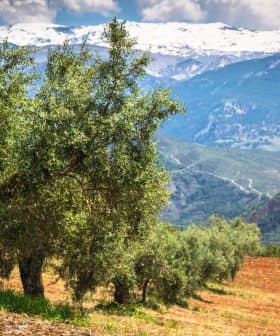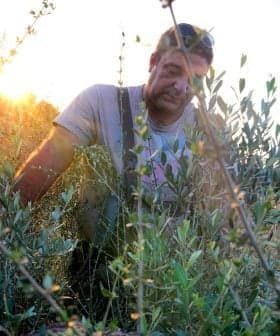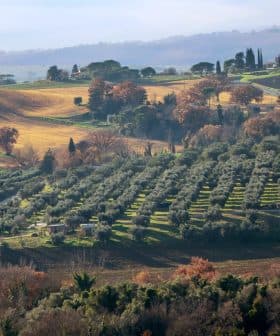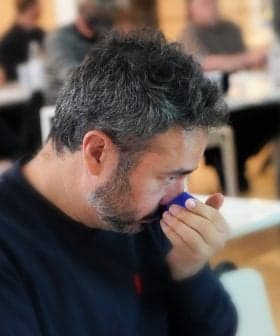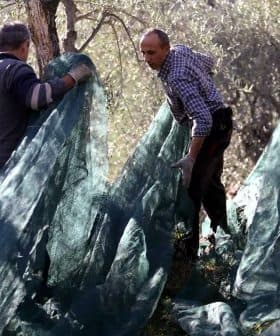U.S. Trade Group Proposes Olive Oil Promotion Cooperative
With backing from industry experts and the USDA, the North American Olive Oil Association has proposed a research and promotion program to drive consumer awareness and demand.
The North American Olive Oil Association is launching an initiative to increase consumer awareness and adoption of olive oil, proposing a research and promotion program to be supervised by the USDA. The initiative aims to increase demand for olive oil in the United States, benefiting the entire supply chain while promoting health and overall well-being.
The North American Olive Oil Association (NAOOA) is launching an industry-wide initiative that promises to increase consumer awareness and adoption of olive oil.
The proposal sent to the United States Department of Agriculture’s (USDA) Agricultural Marketing Service aims to establish an olive oil research and promotion program to create an industry-funded Olive Oil Promotion, Research and Information Order.
According to its proponents, the initiative would increase demand for olive oil in the country, benefiting the entire supply chain while promoting health and overall well-being.
Consider that in just 20 years, the avocado board made the once-exotic avocado as American as apple pie.
“NAOOA began working towards creating a USDA-supervised agricultural product promotion board for olive oil around 2017,” Joseph R. Profaci, NAOOA’s executive director, told Olive Oil Times.
“At the time, I was chair of NAOOA, and we hired the commodity board expert William Watson of The Fresh Approach as a consultant to guide us through the process,” he recalled, highlighting Watson’s previous successes with similar initiatives for mango and watermelon boards.
The draft order outlines a provision for olive oil handlers and importers to pay $0.08 per gallon (€0.02 per liter), applicable only if they handle or import more than 5,000 gallons (18,900 liters) per year.
On the domestic side, first handlers would pay the assessments and, despite representing only a small share of the olive oil consumed in the U.S., they would occupy one-third of the seats on the board.
The proposal would not assess growers unless they were also first handlers of the processed olive oil.
“Those who will contribute are the people who process and handle the processed product. The farmers should be protected. They should not be paying the assessment,” Profaci said.
See Also:Olive Oil Industry Pushes for Tariff Exemption at D.C. EventThe proposal’s support document notes that while olive oil has entered many American kitchens, it remains widely misunderstood.
A consumer survey cited in the document revealed that “approximately three in ten who viewed a bottle labeled ‘olive oil’ said they don’t know or don’t believe that it was produced from olives.”
The document stresses that “the purchase decision depends largely on an understanding and awareness about what makes olive oil special: what it is, how it is made, how to use it, how to appreciate its many flavors and varieties and how it may impact our health and the health of our planet.”
Additionally, two-thirds of the consumers surveyed said they would like to know more about olive oil.
Watson underlined the particular importance of these programs for commodity sectors.
“The benefit of these research and promotion boards comes from the fact that everybody is on a level playing field,” he said.
Watson added that the olive oil industry’s willingness to invest in this initiative directly is highly significant.
“It says a lot that the industry has considered itself in the U.S. market important enough to take this step,” Watson said.
He stressed the thoroughness of the work done so far, which has provided the USDA with a complete picture of import volumes and domestic trends.
While the USDA reviews the proposal, the NAOOA is increasingly optimistic about its outcome.
“USDA Secretary Brooke Leslie Rollins has clearly indicated her intent to be guided by the principles of Making America Healthy Again, including promoting healthy diets to combat obesity and chronic disease,” Profaci said.
Decades of research on olive oil, particularly extra virgin olive oil, have established a strong scientific consensus on its unique health benefits.
“Olive oil should be the poster child for the ‘food as medicine’ movement since healthy fats are fundamental in all dietary patterns recommended by the Dietary Guidelines for Americans,” Profaci said. “Now is the moment.”
The proposal identifies critical barriers to greater consumption: a lack of knowledge, widespread misinformation, inadequate market intelligence and marketing strategies, and a lack of research on health and sustainability.
According to the document, efforts to address these issues to date “have been inadequate,” mainly due to “lack of adequate funding” and “industry fragmentation.”
Profaci acknowledged that “some philosophical objections” exist, rooted mainly in perceptions that USDA-supervised programs represent government interference in business.
“Philosophically, some people object to anything that looks like a tax and oppose any government involvement in business,” Profaci noted. In this case, however, importers and first handlers would bear the cost, differentiating it from contentious cases in the beef and pork sectors.
See Also:Olive Oil Industry Pushes for Tariff Exemption at D.C. EventThe proposed order language specifies that assessments will apply to imported and domestically handled olive oil intended for human consumption, at a rate of $0.08 per gallon. Still, it exempts handlers who manage less than 5,000 gallons annually.
Further, it formally defines olive oil categories eligible under the program, closely aligning with USDA and Codex standards, to ensure regulatory clarity.
Watson suggested that the USDA’s posting the proposal publicly is a positive sign. “They wouldn’t post it there if they didn’t think it was serious and if they weren’t going to continue to move it forward,” he said.
If approved, the board would launch with an annual budget of approximately $8 (€7) million.
“That’s not a fortune. But considering NAOOA’s significant educational contributions with a yearly general promotion budget usually under $150,000 (€130,000), $8 million would be a strong start,” Profaci said.
The cooperative would prioritize initiatives such as national educational campaigns targeting health professionals, participation in major nutrition conferences like FNCE, expansion of the olive oil curriculum developed with the Culinary Institute of America, and developing resources for culinary schools, corporate kitchens, and military commissaries.
Profaci also stressed the importance of retail education.
See Also:Trade Group Announces Olive Oil Quality Testing Initiative“Improving supply chain knowledge about olive oil’s sensitivity to temperature, for example, could ensure consumers and foodservice professionals have the best possible experience with olive oils,” he said.
The support document draws a parallel with the avocado board experience, noting that avocados, once an exotic product in the U.S., have become mainstream within two decades.
“An olive oil board could change this. Consider that in just 20 years, the avocado board made the once-exotic avocado as American as apple pie,” Profaci said.
The proposal also includes a feature that defers the referendum usually required to launch such programs until three years after implementation.
“The idea is to let everybody in the sector look at how things are going to move. Everybody is going to have a fair representation on the board. Let’s let it work for three years,” Profaci said.
The support document justifies the deferral by explaining that “early success in promotional activities” is expected to “build credibility and encourage greater industry cohesion before the industry votes on the program continuation.”
Watson estimated that the USDA might move forward with approval within three to six months, but warned that the timing for such processes is uncertain.
Once approved, the program would become effective upon publication in the Federal Register.
“That rule will say ‘effective this date,’ this assessment rate will begin on olive oils imported and domestically, and the result is that the National Olive Oil Promotion Board will collect these funds and invest them,” Watson explained.
For Profaci and the NAOOA, the proposal represents the culmination of decades of effort.
“From the time I got involved in the industry in 1993, the association has always looked at the research and promotion order as the U.S. industry’s Holy Grail. This is what the industry in the United States needs. We’re getting close to that objective,” he said.
- Draft of the Olive Oil Promotion, Research and Information Order
- Proposal Establishing the Cooperative for Olive Oil Promotion
Share this article


